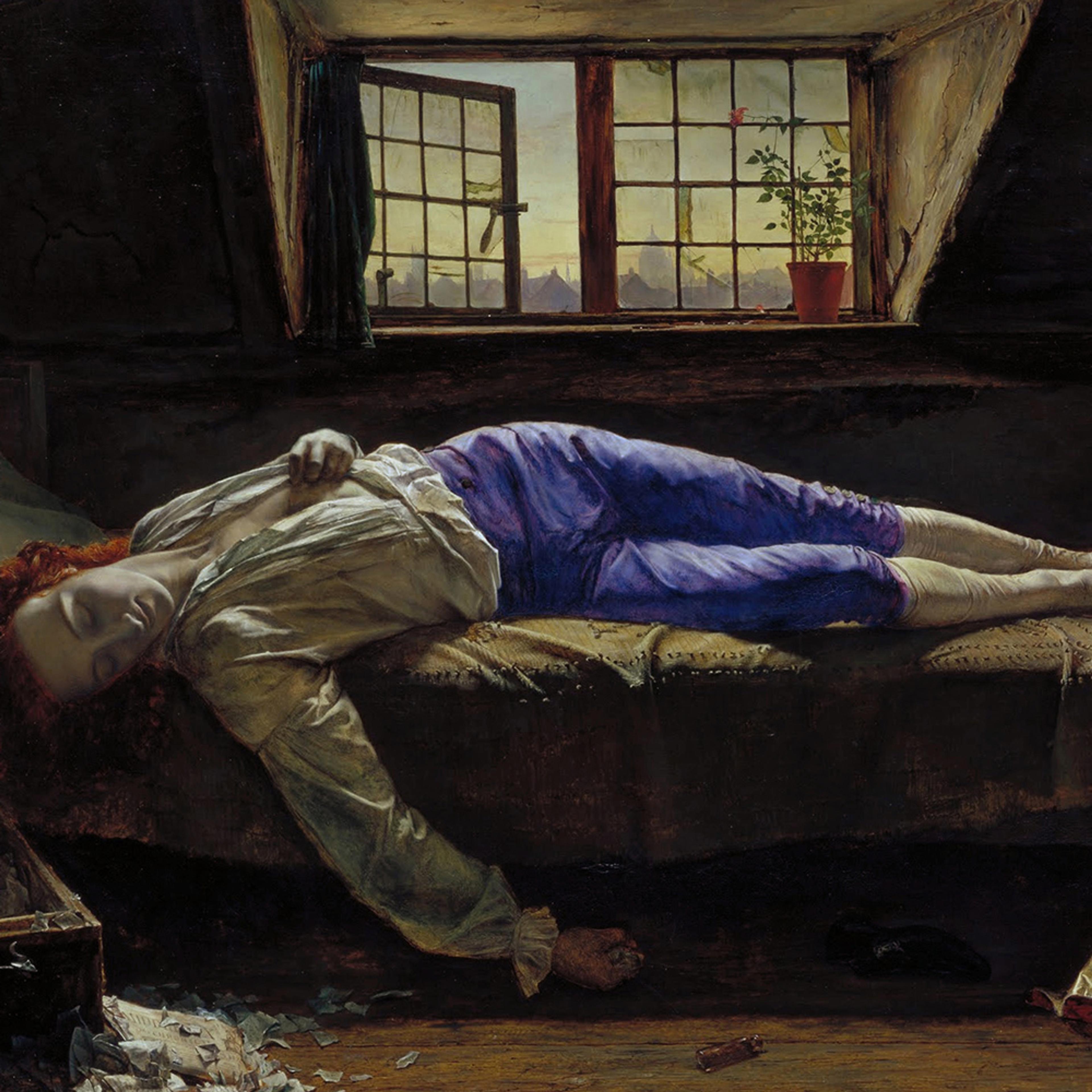A Winter Landscape (1811) by the avowedly Protestant painter Caspar David Friedrich. Courtesy the National Gallery, London
Protestantism is good for some people and bad for others. At least that is the conclusion if we are to judge by the stark matters of life, or death, and prosperity. For the majority of the population, Protestantism tends to raise economic prosperity through better education. But for people who are in a suicidal state of mind, the individualistic qualities of Protestantism can tip the balance towards ending their lives. In fact, the two aspects might be related in a ‘dark-contrasts paradox’: unhappy people can be particularly prone to suicidal behaviour when they live in well-off places and compare their fate to the better-off around them. In life and death, religion clearly matters.
To test the prediction that Protestants have a higher propensity to commit suicide than Catholics, we studied data from 19th-century Prussia. We looked to the 19th century for two reasons. First, it is when the French sociologist Émile Durkheim engaged with the question of suicide in one of the classics of social science and, second, because religion was more pervasive at the time. This does not mean that belief was uniform and always aligned with Church doctrines, just that virtually everyone adhered to a religious denomination, and that religion pervaded virtually all aspects of human life. Prussia also has the advantage that neither Protestants nor Catholics were small minorities of the population. They lived together in one state with a common setting of government, institutions, jurisdiction, language and basic culture. In several library archives we found – and digitised – data from the Prussian statistical office. For the years 1869-71, local police departments meticulously administered data on suicide from 452 Prussian counties.
In principle, perhaps the biggest challenge for an empirical identification of the effect of Protestantism on suicide is that people with different characteristics might self-select into religious denominations. For example, are people who are depressed more likely to become Protestants? But the self-selecting factor is less of an issue in 19th-century Prussia. There (as in many other places) individual change of denomination was almost unheard of, and religious affiliation derives from choices of local rulers made several centuries earlier. For the social scientist, Prussia presents another advantage. During the Reformation, Protestantism spread in a roughly concentric fashion around Luther’s city of Wittenberg. This pattern can help to link cause and effect between Protestantism and suicide.
As a consequence of this geographic pattern of diffusion, the share of Protestants is higher near Wittenberg. So is the suicide rate. The share of Protestants in a county is clearly positively associated with the suicide rate. The average suicide rate is notably higher in all-Protestant counties than in all-Catholic counties. Numerically, the difference in suicides between religious denominations in Prussia is huge: suicide rates among Protestants (at 18 per 100,000 people per year) are roughly three times higher than among Catholics.
In his classic Le suicide (1897), Durkheim presented aggregate indicators suggesting that Protestantism was a leading correlate of suicide incidence. The proposition that Protestants have higher suicide rates than Catholics has been ‘accepted widely enough for nomination as sociology’s one law’.
Protestant countries today still tend to have substantially higher suicide rates. This fact suggests that the relation of religion and suicide remains a vital topic. Every year, more than 800,000 people commit suicide worldwide, making it a leading cause of death, in particular among young adults. The prevalence of suicide creates far-reaching emotional, social and economic ramifications, and invokes major policy efforts to prevent them.
Previous social science research on suicide has looked at the matter from an economics perspective. The economists have modelled suicide as a choice between life and death where the utility of staying alive or ending life are weighed against each other. If the utility of staying alive falls below the utility of ending life, suicide is an ‘optimal’ choice.
Within such a framework, two classes of mechanisms predict higher suicide rates of Protestants than Catholics from a theoretical viewpoint. First, as Durkheim suggested, Protestant and Catholic denominations differ in their group structure. Protestantism is a more individualistic religion. According to this ‘sociological channel’, when life hits hard, Catholics can rely on a stronger community, which might keep up their life spirit.
We think there is also a ‘theological channel’. Protestant doctrine stresses the importance of salvation by God’s grace alone, and not by any merit of one’s own work. By contrast, Catholic doctrine allows for God’s judgment to be affected by one’s deeds and sins. As a consequence, committing suicide entails the disutility of forgoing paradise for Catholics but not for Protestants.
Catholics (but not Protestants) also consider the confession of sins a holy sacrament. Since suicide is the only sin that (by definition) can no longer be confessed, this creates a substitution effect that diverts Catholics from committing suicide. It steers them towards other responses to times of utmost desperation.
So which of the two classes of theoretical mechanisms – the sociological or the theological channel – is more likely to account for the higher suicide rate among Protestants? Ultimately, additional analyses that draw on historical church-attendance data and present-day suicide data confirm the sociological rather than the theological mechanism. One key is that the suicidal tendency of Protestants is more pronounced in areas with low church attendance. The strongest effect is thus more likely to be found in areas with little social integration rather than in areas with high devotion to the Protestant doctrine.
Finally, more contemporary data shows that, while Protestants still have a higher suicide rate than Catholics, it is highest among people without a religious affiliation who are not subject to theological doctrine. Both pieces of evidence suggest that the sociological channel to explain Protestants’ higher suicide rate is more relevant than the theological channel.






